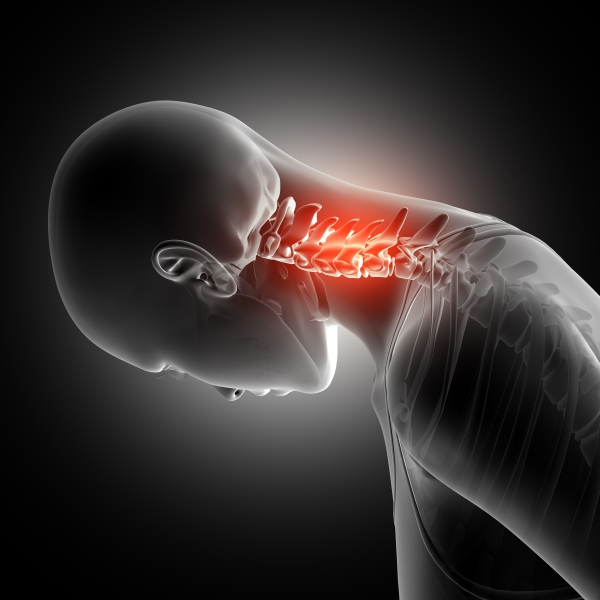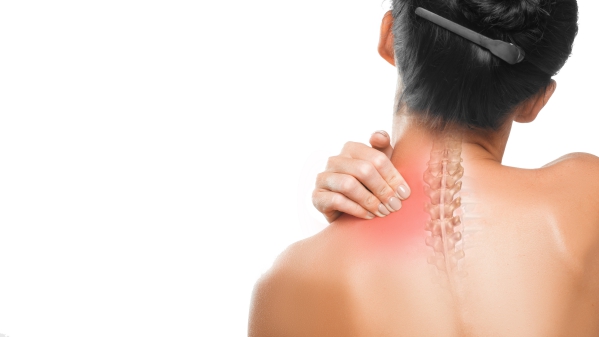What is cervical spondylosis?
Cervical spondylosis is a chronic condition whereby the vertebral bodies and the disks between the vertebrae of the neck (cervical vertebrae) are affected. This condition mainly occurs due to ageing causing the disks to dehydrate and shrink, resulting in osteoarthritis of the cervical vertebrae.
Cervical spondylosis is a common condition which is responsible for around 2% of hospital admissions in the United States. 90% of women above the age of 60 years and 90% of men above the age of 50 years suffer from cervical spondylosis.
At the early stages of cervical spondylosis, no symptoms may be experienced. However, as the condition progresses muscle weakness, headaches, neck pain amongst others may be experienced. At this stage, cervical immobilisation will be required to prevent progression of the condition. Surgery is usually indicated if there is evidence of progressive neurological problems.
What are the causes of cervical spondylosis?
Cervical spondylosis develops from gradual wear and tear of your cervical vertebrae and the disks between them due to ageing. This may result in changes including:
- Herniated disks: The disks lying in between your vertebrae consist of a nucleus (centre) surrounded by an annulus (a tougher exterior). A herniated disk occurs when there is a crack in the annulus through which the nucleus bulges. This bulging disk may press on nerve roots and the spinal cord.
- Dehydrated disks: As from the age of 40 years, your vertebral disks start to dry out and shrink. This decreases the ability of the disks to act as cushions, therefore resulting in more bone-on-bone contact between the cervical vertebrae.
- Inelastic ligaments: The ligaments in your neck are cords that connect bone to bone and become stiffer with age, making your neck less flexible.
- Bone spurs: Bone spurs (osteophytes) are tiny pointed outgrowth of bone in an attempt to strengthen your spine due to disk degeneration. These may pinch the spinal cord and nerve roots resulting in neurological problems.

What are the risk factors of cervical spondylosis?
There are several factors which may increase your risk of developing cervical spondylosis and these include:
- Age: As your age increases, your risk of developing cervical spondylosis increases. 90% of men above the age of 50 years and 90% of women above the age of 60 years have evidence of cervical spondylosis on plain radiographs in the United States.
- Neck trauma: The risk of developing cervical spondylosis increases if you have had neck injuries in the past.
- Occupation: Occupations that require awkward neck positioning, repetitive neck movements or a lot of overhead works may increase your risk of developing cervical spondylosis due to the increased stress placed on the neck on a daily basis.
- Cigarette smoking: Cigarette smoking has been associated with increased neck pain.

What are the signs and symptoms of cervical spondylosis?
The signs and symptoms of cervical spondylosis include:
- Neck pain: Chronic neck pain is one of the most common symptoms of cervical spondylosis. This may be due to nerve compression, inelastic spinal ligaments and degenerative disks. The neck pain may be localised in the neck or may radiate to the shoulder, back of the head and arm. This pain may be worse in certain positions, affecting your sleep.
- Numbness, tingling and weakness in your feet, legs, hands or arms: This occurs due to compression of the nerves in your neck.
- Loss of bowel control
- Loss of bladder control
- Difficulty walking due to lack of coordination
- Electrical shock sensation when bending the neck forward

Making a diagnosis
To make a diagnosis, your doctor will first take a detailed history from you to know more about your symptoms. After the history taking, your doctor will perform a thorough physical examination to look for signs of cervical spondylosis. This will include assessing the range of motion of your neck, your reflexes and muscle strength. Your doctor may order some tests in order to confirm the diagnosis and these include:

- Plain cervical radiography: An x-ray of the neck is routine in every person with suspected cervical spondylosis. This imaging technique will allow your doctor to assess your cervical disks and vertebrae. In addition, it can be used to rule out other conditions such as infections, fractures or tumours.
- Computed Tomography (CT) scan: A CT scan of the neck provides more detailed imaging than plain radiography.
- Magnetic Resonance Imaging (MRI) scan: An MRI scan of the neck provides better imaging of nerves and does no use ionising radiation.
- Electromyography: This test can be used to measure the electrical activities in your nerves to confirm whether there is compression of your nerves or not.
What are the treatments of cervical spondylosis?
The treatment options for cervical spondylosis mainly include medications, physical therapy and surgery.
Medications
The medications used in the management of cervical spondylosis include:
- Non-steroidal anti-inflammatory drugs (NSAIDs): NSAIDs are used to relieve the pain associated with cervical spondylosis. In addition, it may also decrease inflammatory processes in your neck. Examples include ibuprofen, naproxen, acetylsalicylic acid (aspirin), indomethacin and meloxicam amongst others.
- Corticosteroids: Corticosteroids are potent anti-inflammatory drugs. An example is prednisolone.
- Muscle relaxants: This class of drug is used to treat muscle spasm in the neck and an example is methocarbamol.
- Antidepressants: Antidepressants such as amitriptyline can be used in selected cases of chronic pain.

Physical therapy
The mainstay of conservative treatment for people with severe cervical spondylosis is immobilization of the cervical spine. This will prevent excessive motion of the neck to protect the nerves. Soft cervical collars may be used during daytime only as it provides limited protection to the cervical spine. Instead, rigid cervical collars should be used such as Philadelphia collar or Minerva body jacket should be used to significantly immobilize the cervical spine.
In addition, mechanical traction is a technique that helps to provide more space within the spine in cases where the nerve roots are pinched. Furthermore, cervical exercises are often beneficial to maintain the strength of cervical muscles.
Surgery
Surgery is done when there is progressive neurological problems, unbearable pain not relieved by medications or documented compression of the spinal cord or cervical nerve root. The surgical procedure involves your orthopaedic surgeon either removing a herniated disk, removing part of a vertebra or fusing a segment of the neck using hardware or bone graft.
What are the complications of cervical spondylosis?
If cervical spondylosis is left untreated, the following complications may ensue:
- Cervical myelopathy: This is caused by compression on the spinal cord resulting and it is characterized by walking instability and clumsiness of the hands.
- Paraplegia: Paraplegia is paralysis that affects the lower half of the body.
- Tetraplegia: tetraplegia is also known as quadriplegia and is the paralysis of all the four limbs and torso. In this condition, both sensation and control are lost.
- Recurrent urinary tract infections
- Recurrent chest infection
- Pressure sores due to immobility

Expectations
Cervical spondylosis is a condition that develops slowly and progressively. Seeking medical advice and treatment early is key to prevent the development of complications which could have significant impact on your daily activities and quality of life.
Source:
J. Alastair, I. and Simon, M., 2016. Davidson's Essentials of Medicine. 2nd ed. London: ELSEVIER.
Parveen, K. and Michael, C., 2017. Kumar & Clarks Clinical Medicine. 9th ed. The Netherlands: ELSEVIER.
Levin, K., 2020. Cervical Spondylotic Myelopathy.
Al-Shatoury, H., 2020. Cervical Spondylosis Treatment & Management: Rehabilitation Program, Medical Issues/Complications, Surgical Intervention.
Hassan, A., 2020. Cervical Spondylosis Workup: Laboratory Studies, Imaging Studies, Other Tests.


